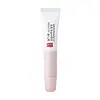What's inside
What's inside
 Key Ingredients
Key Ingredients

 Benefits
Benefits

 Concerns
Concerns

 Ingredients Side-by-side
Ingredients Side-by-side

Oleic/Linoleic/Linolenic Polyglycerides
EmollientPolyglyceryl-2 Isostearate
EmulsifyingSesamum Indicum Seed Oil
EmollientDilinoleic Acid/Propanediol Copolymer
EmollientHelianthus Annuus Seed Oil
EmollientGlyceryl Caprylate
EmollientSqualane
EmollientParfum
MaskingCamellia Oleifera Seed Oil
Skin ConditioningAleurites Moluccanus Seed Oil
Skin ConditioningAvena Sativa Kernel Oil
Skin ConditioningPolyglyceryl-3 Polyricinoleate
EmulsifyingSimmondsia Chinensis Seed Oil
EmollientRubus Occidentalis Seed Oil
EmollientVaccinium Macrocarpon Seed Oil
Skin ConditioningCalophyllum Inophyllum Seed Oil
AntimicrobialCaprylic/Capric Triglyceride
MaskingTocopherol
AntioxidantRicinus Communis Seed Oil
MaskingBenzyl Alcohol
PerfumingVitis Vinifera Seed Oil
EmollientOlea Europaea Fruit Oil
MaskingPunica Granatum Extract
AstringentCI 75470
Cosmetic ColorantCI 17200
Cosmetic ColorantAlaria Esculenta Extract
Skin ProtectingLinalool
PerfumingCI 15850
Cosmetic ColorantAscorbyl Palmitate
AntioxidantMoringa Oleifera Seed Oil
EmollientBorago Officinalis Seed Oil
EmollientAdansonia Digitata Seed Oil
EmollientChenopodium Quinoa Seed Oil
EmollientVanillin
MaskingSclerocarya Birrea Seed Oil
HumectantCitrus Reticulata Peel Oil
MaskingButyrospermum Parkii Oil
EmollientCinnamal
PerfumingLimonene
PerfumingEugenol
PerfumingOleic/Linoleic/Linolenic Polyglycerides, Polyglyceryl-2 Isostearate, Sesamum Indicum Seed Oil, Dilinoleic Acid/Propanediol Copolymer, Helianthus Annuus Seed Oil, Glyceryl Caprylate, Squalane, Parfum, Camellia Oleifera Seed Oil, Aleurites Moluccanus Seed Oil, Avena Sativa Kernel Oil, Polyglyceryl-3 Polyricinoleate, Simmondsia Chinensis Seed Oil, Rubus Occidentalis Seed Oil, Vaccinium Macrocarpon Seed Oil, Calophyllum Inophyllum Seed Oil, Caprylic/Capric Triglyceride, Tocopherol, Ricinus Communis Seed Oil, Benzyl Alcohol, Vitis Vinifera Seed Oil, Olea Europaea Fruit Oil, Punica Granatum Extract, CI 75470, CI 17200, Alaria Esculenta Extract, Linalool, CI 15850, Ascorbyl Palmitate, Moringa Oleifera Seed Oil, Borago Officinalis Seed Oil, Adansonia Digitata Seed Oil, Chenopodium Quinoa Seed Oil, Vanillin, Sclerocarya Birrea Seed Oil, Citrus Reticulata Peel Oil, Butyrospermum Parkii Oil, Cinnamal, Limonene, Eugenol
Hydrogenated Polyisobutene
EmollientMicrocrystalline Wax
Emulsion StabilisingPentaerythrityl Tetraisostearate
EmollientButyrospermum Parkii Butter
Skin ConditioningDextrin Palmitate/Ethylhexanoate
EmulsifyingGlycerin
HumectantPolyethylene
AbrasiveDehydroacetic Acid
PreservativeDimethicone
EmollientDisteardimonium Hectorite
StabilisingButylene Glycol
HumectantSorbitan Isostearate
EmulsifyingCamellia Japonica Seed Oil
EmollientPanax Ginseng Root Water
MaskingAngelica Acutiloba Root Extract
Skin ConditioningOphiopogon Japonicus Root Extract
Skin ConditioningBupleurum Chinense Root Extract
AstringentOzokerite
Emulsion StabilisingHc Red No. 8
CI 77491
Cosmetic ColorantCaprylic/Capric Triglyceride
MaskingTocopherol
AntioxidantTocopheryl Acetate
AntioxidantTriethylhexanoin
MaskingTitanium Dioxide
Cosmetic ColorantPolyglyceryl-2 Diisostearate
EmulsifyingPolyglyceryl-2 Dipolyhydroxystearate
Skin ConditioningPolyglyceryl-2 Triisostearate
EmulsifyingPolyhydroxystearic Acid
EmulsifyingPropylene Carbonate
SolventHydrolyzed Collagen
EmollientParfum
MaskingHydrogenated Polyisobutene, Microcrystalline Wax, Pentaerythrityl Tetraisostearate, Butyrospermum Parkii Butter, Dextrin Palmitate/Ethylhexanoate, Glycerin, Polyethylene, Dehydroacetic Acid, Dimethicone, Disteardimonium Hectorite, Butylene Glycol, Sorbitan Isostearate, Camellia Japonica Seed Oil, Panax Ginseng Root Water, Angelica Acutiloba Root Extract, Ophiopogon Japonicus Root Extract, Bupleurum Chinense Root Extract, Ozokerite, Hc Red No. 8, CI 77491, Caprylic/Capric Triglyceride, Tocopherol, Tocopheryl Acetate, Triethylhexanoin, Titanium Dioxide, Polyglyceryl-2 Diisostearate, Polyglyceryl-2 Dipolyhydroxystearate, Polyglyceryl-2 Triisostearate, Polyhydroxystearic Acid, Propylene Carbonate, Hydrolyzed Collagen, Parfum
Alternatives
Ingredients Explained
These ingredients are found in both products.
Ingredients higher up in an ingredient list are typically present in a larger amount.
This ingredient is an emollient, solvent, and texture enhancer. It is considered a skin-softener by helping the skin prevent moisture loss.
It helps thicken a product's formula and makes it easier to spread by dissolving clumping compounds.
Caprylic Triglyceride is made by combining glycerin with coconut oil, forming a clear liquid.
While there is an assumption Caprylic Triglyceride can clog pores due to it being derived from coconut oil, there is no research supporting this.
Learn more about Caprylic/Capric TriglycerideParfum is a catch-all term for an ingredient or more that is used to give a scent to products.
Also called "fragrance", this ingredient can be a blend of hundreds of chemicals or plant oils. This means every product with "fragrance" or "parfum" in the ingredients list is a different mixture.
For instance, Habanolide is a proprietary trade name for a specific aroma chemical. When used as a fragrance ingredient in cosmetics, most aroma chemicals fall under the broad labeling category of “FRAGRANCE” or “PARFUM” according to EU and US regulations.
The term 'parfum' or 'fragrance' is not regulated in many countries. In many cases, it is up to the brand to define this term.
For instance, many brands choose to label themselves as "fragrance-free" because they are not using synthetic fragrances. However, their products may still contain ingredients such as essential oils that are considered a fragrance by INCI standards.
One example is Calendula flower extract. Calendula is an essential oil that still imparts a scent or 'fragrance'.
Depending on the blend, the ingredients in the mixture can cause allergies and sensitivities on the skin. Some ingredients that are known EU allergens include linalool and citronellol.
Parfum can also be used to mask or cover an unpleasant scent.
The bottom line is: not all fragrances/parfum/ingredients are created equally. If you are worried about fragrances, we recommend taking a closer look at an ingredient. And of course, we always recommend speaking with a professional.
Learn more about ParfumTocopherol (also known as Vitamin E) is a common antioxidant used to help protect the skin from free-radicals and strengthen the skin barrier. It's also fat soluble - this means our skin is great at absorbing it.
Vitamin E also helps keep your natural skin lipids healthy. Your lipid skin barrier naturally consists of lipids, ceramides, and fatty acids. Vitamin E offers extra protection for your skin’s lipid barrier, keeping your skin healthy and nourished.
Another benefit is a bit of UV protection. Vitamin E helps reduce the damage caused by UVB rays. (It should not replace your sunscreen). Combining it with Vitamin C can decrease sunburned cells and hyperpigmentation after UV exposure.
You might have noticed Vitamin E + C often paired together. This is because it is great at stabilizing Vitamin C. Using the two together helps increase the effectiveness of both ingredients.
There are often claims that Vitamin E can reduce/prevent scarring, but these claims haven't been confirmed by scientific research.
Learn more about Tocopherol